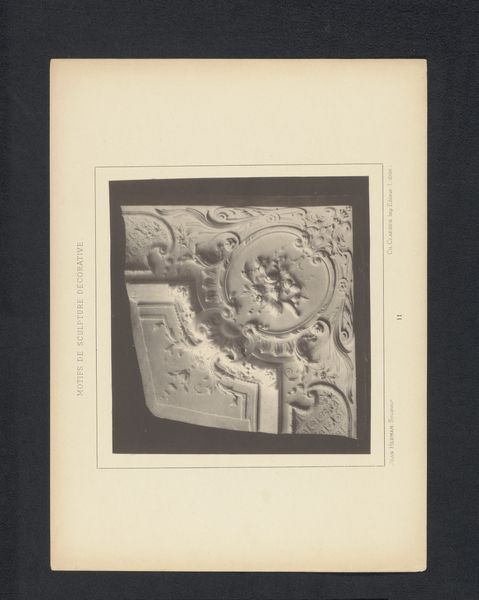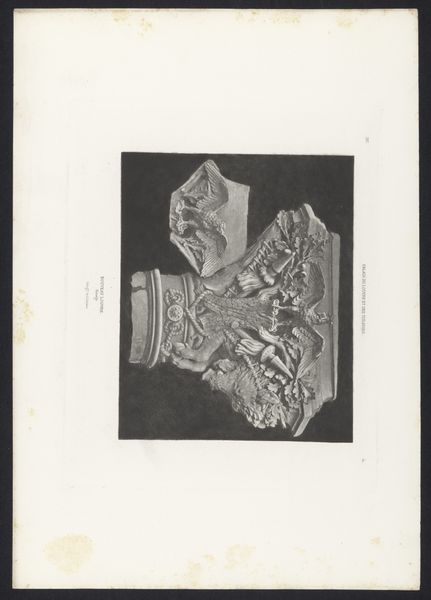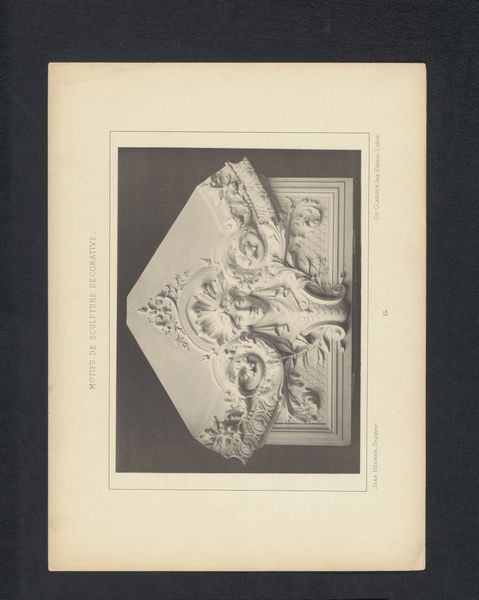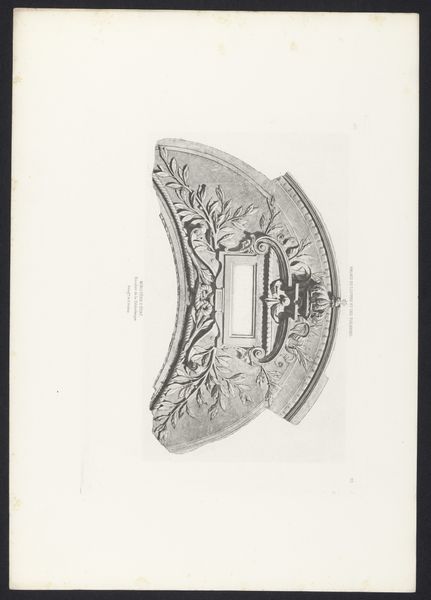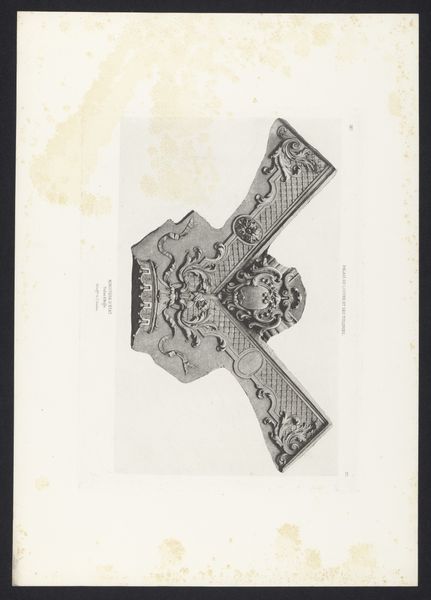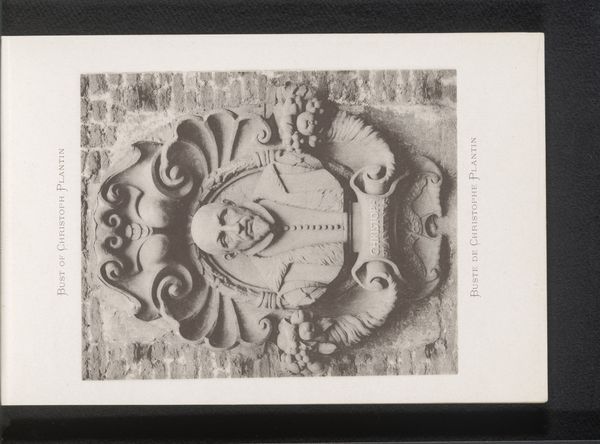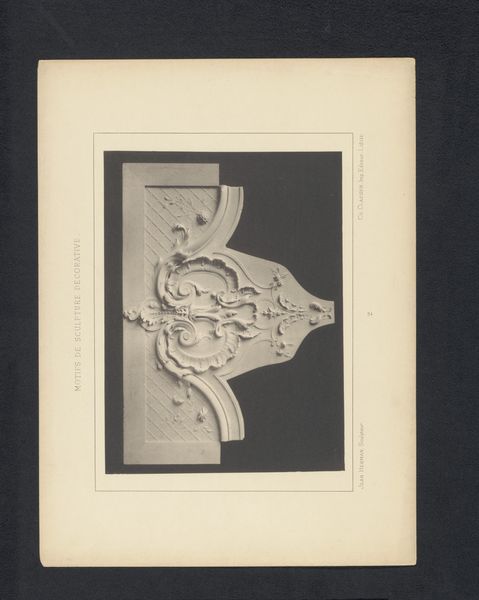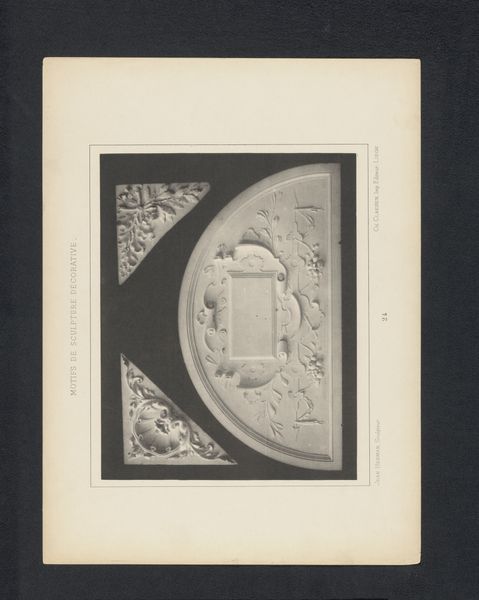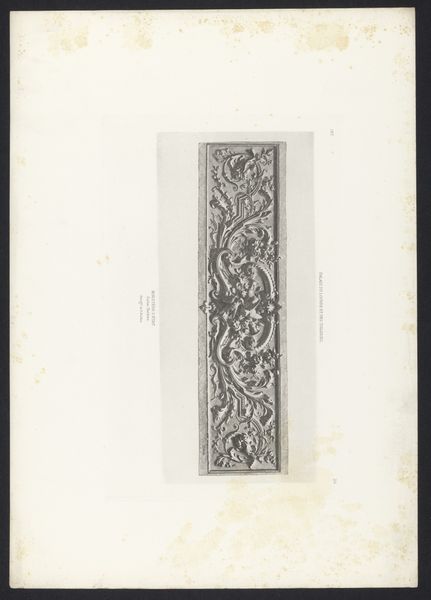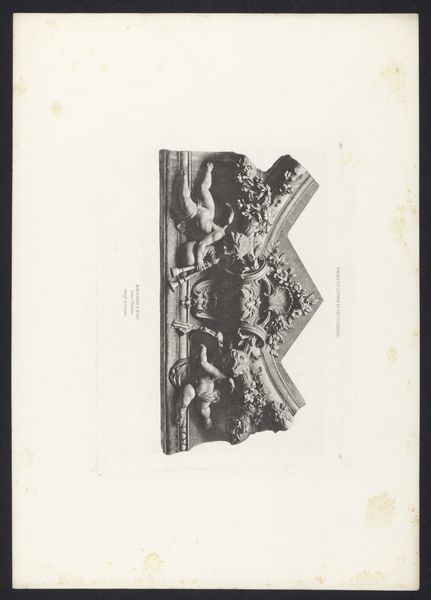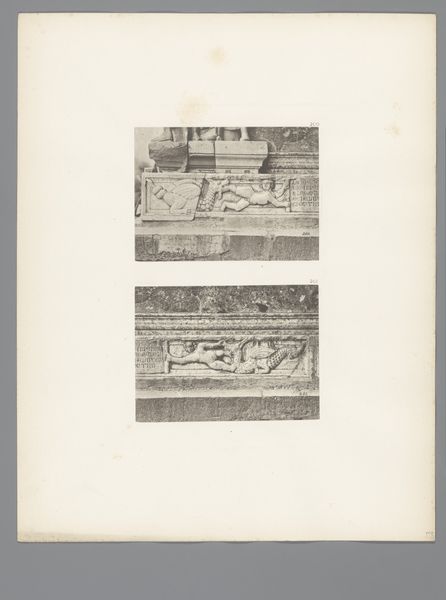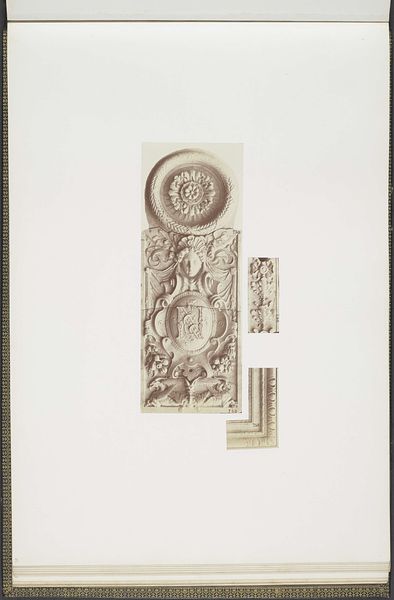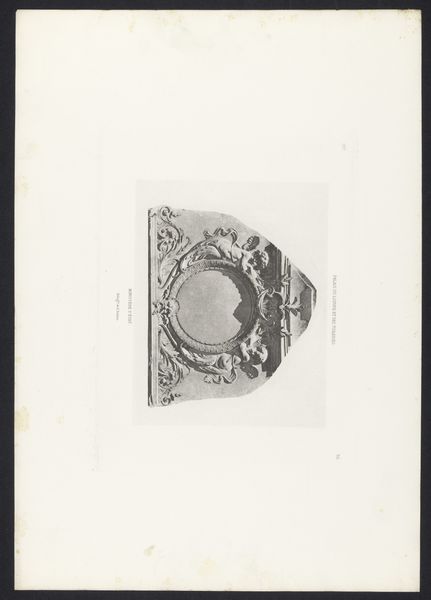
Ornament van de Salon d'Angle in het Palais du Louvre te Parijs before 1870
0:00
0:00
Dimensions: height 153 mm, width 260 mm
Copyright: Rijks Museum: Open Domain
Curator: Here we have an albumen print from before 1870, by Edouard Baldus, showcasing ornamentation from the Salon d'Angle in the Palais du Louvre, Paris. Editor: My first thought is fragmentation. It looks almost like an archeological fragment, presented with this high contrast photography. It makes me think of memory, a broken but suggestive fragment of a lost whole. Curator: Yes, albumen prints themselves are fascinating— the process involved coating paper with egg white and then exposing it to light through a negative. It was a popular method for architectural photography because it captured incredible detail. Look at the intricate layering here: we see an initial structure, with carefully placed vegetal design surrounding a face. A close study will reveal the craft, and skill needed. Editor: Absolutely. And consider the symbolic language –the vegetal motifs, common in Neoclassicism, speak to nature, growth, and perhaps even paradise. The human face adds a layer of complexity; perhaps an allegory of one of the seasons, or an idealised portrait from mythology? These are not merely decorative, they are meant to communicate ideals, evoke history, and underscore power. Curator: Indeed, Neoclassicism was intrinsically linked to the rise of the nation-state. The careful production and the deliberate referencing of antiquity reinforced social order and cultivated aspirations to legacy, to permanence. Think about the number of man-hours needed to photograph and distribute architectural details across 19th-century Europe! Editor: It certainly casts a new light on "Ornament." The medium, this method of distributing reproducible imagery, has altered it. Ornament here also carries the weight of institutional memory and control. It speaks to a desire for social legibility. Curator: Ultimately, the image invites a broader understanding of ornamentation. We should question, perhaps, the traditional division of “fine arts” and "decorative arts" –it is all labor after all, intended to produce meaning, no matter the means. Editor: And perhaps, too, it encourages us to ask: what remnants of our contemporary built environment will be unearthed and pondered over, in a similar vein, by future generations? Curator: A sobering but insightful question to conclude with. Thank you.
Comments
No comments
Be the first to comment and join the conversation on the ultimate creative platform.
